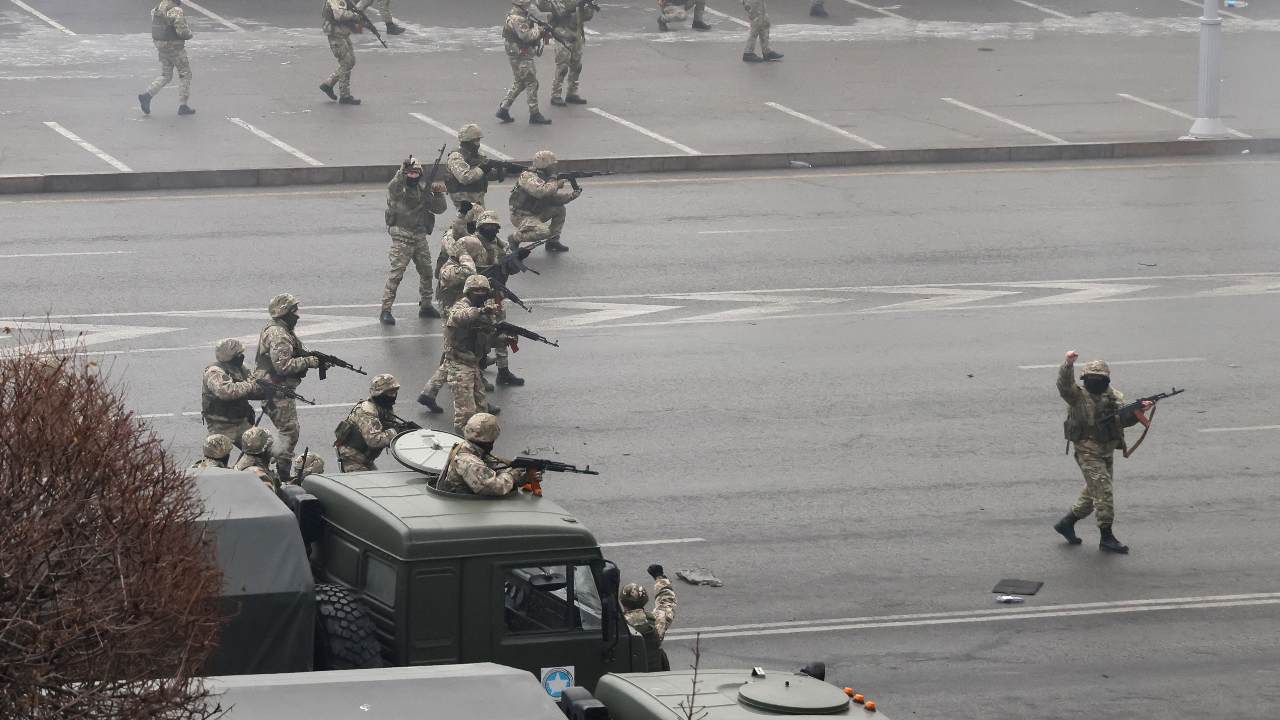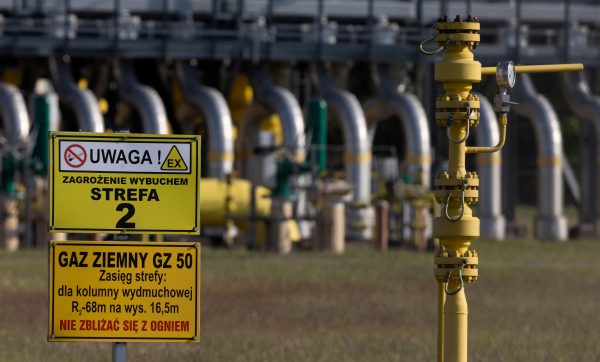Kazakhstan is burning. Scores are dead. Foreigners are officially banned from entering the country. And troops are on the streets. For the first time in the organization’s history, the Collective Security Treaty Organization (CSTO) invoked its Article 4 collective security clause.
Late last night (January 5), Kazakh President Kassym-Jomart Tokayev used a televised address to declare a state of emergency, called the protesters “terrorists,” and publicly appealed for CSTO to come to Kazakhstan’s aid — or rather, to help shore up what remained of the Kazakh government, now holed up in those buildings that have not been burned down.
Russian paratroopers arrived this morning. Other CSTO members — Armenia, Belarus, Kyrgyzstan, and Tajikistan — are mobilizing and on the way.
The speed of events in Kazakhstan is unprecedented: protests started only on Sunday (January 2) after gas prices doubled, and rapidly escalated thereafter. The nature of the protests and the opposition remain unclear, though the scale shows this is more than simply a cost-of-living revolt. The uprising seems spontaneous, and it is still not known whether there is an identifiable movement or who, if anyone, will claim to represent it. The scale of protests is not massive, but one thing is clear: some demonstrators are willing to use more than peaceful slogans to get their point across, even as others call for calm.
The CSTO is a Russian-led military alliance formed in 1992 after the collapse of the Warsaw Pact. It is much smaller, with just six members, and less ambitious, but has been a focus for renewed Russian activity since last year, when the US left Afghanistan and fears arose of a security vacuum in Central Asia.
Today it is behaving more like the Warsaw Pact, entering a Russian-allied state to prop up a leadership threatened by a popular uprising. The Kremlin and its allies are backing regime claims that the uprising has been led by “foreign-trained terrorist gangs.” Quite how much support there was for the dispatch of troops is unknown: since 2010, at Russia’s initiative, CSTO Article 4 decisions have been made by secret ballot.
Ironically, Armenia holds the rotating chairmanship of the CSTO and so it was Armenian Prime Minister Nikol Pashinyan, who himself rose to power through peaceful protests, who made the announcement that the alliance would respond. Armenia sought to invoke CSTO article 4 during its second war with Azerbaijan in 2020, but was turned down by Putin. This time, the Kremlin feels the need for direct involvement — Russia is sending 3,000 troops, Belarus 500, Armenia 70, Tajikistan 200, and Kyrgyzstan is as yet undecided, with the Kyrgyz President saying any military effort would not be aimed against protestors.
It is notable that the most powerful country in Central Asia, Uzbekistan, is not part of CSTO and hence not part of the intervention. President Tokayev and Uzbek President Shavkat Mirziyoyev discussed the situation by phone today, and the press release announced that: “The leader of Uzbekistan reaffirmed support to fraternal nation and leadership of Kazakhstan in normalization of the situation, ensuring stability and well-being in the country.” There was no mention of support beyond these words.
So what happens next?
- The CSTO intervention could pacify the protests, leaving President Tokayev to regain control of the country with a combination of an iron fist and perhaps some minor concessions. In this case, Tokayev will successfully consolidate his status as a leader, but will face a bill from the Kremlin. Wholly dependent on Russia for its survival, Kazakhstan would learn, much like Belarus, that Russian assistance does not come cheap.
- Alternatively, Tokayev will be ousted from within the elite and replaced — probably by someone with Russia’s backing (because whatever the outcome, Kazakhstan’s military and economic reliance on Russia, from security to workers’ remittances, is enormous.)
- In a third outcome, CSTO intervention fails, and the situation remains highly unstable — possibly resulting in a civil war between regime loyalists and opposition forces (there were reports yesterday that armories had been breached by protesters.) While this may be the least likely outcome, for now, it would cause mayhem in the region, with unknown consequences for Kazakhstan’s borders or the stability of neighboring regimes.
Regardless, some things are already clear. The era of former Kazakh President Nursultan Nazarbayev, head of state from 1990-2019, is over. Tokayev this week ousted Nazarbayev as the head of the security council and fired others with close ties to him, reportedly including the head of the secret police. Now the pivotal question becomes whether Tokayev can keep control of the situation, or if he too will fall.
Kazakhstan’s carefully curated image as the most stable and prosperous country in Central Asia is beyond repair; this outbreak of violence will have serious economic implications. As oil-rich as the country may be, uprisings are bad for business. The country’s bonds slumped on the news, raising the cost of Kazakh borrowing. The country is wealthy and arguably Russia’s closest partner since the 2000s, but a bloody campaign against popular dissent threatens a descent into isolation from the non-Russian world and major capital markets, as well as the risk of Belarussian-style vassal status.
For CSTO, the deployment of troops to Kazakhstan seals the organization’s transition to a Warsaw Pact-lite, where its most important purpose is to suppress popular uprisings in member countries and bolster the stability of the Kremlin’s favored autocrats. That may suit Putin and his ministers, but it will repel those — including many citizens in CSTO nations — who hoped the bad old days had gone forever.
Cordelia Buchanan Ponczek is a Clarendon Scholar and doctoral candidate at the University of Oxford, where she is researching public-private investment into extractive industries.




